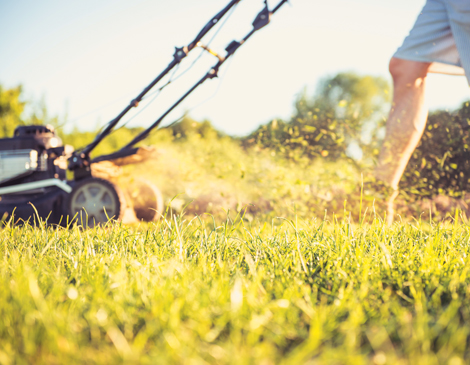Setting a sprinkler in your yard isn’t cutting it anymore. For a green lawn all summer, you might need to add a few steps — and you won’t have to add chemicals. “There is this misconception that having a dense, weed-free lawn requires tons of chemical input,” says Tina Graver, coordinator of Thrive Lawn & Plant Healthcare. “That’s just not the case.” Graver shares four lawn care tips to keep your yard healthy.
Water strategically. Graver suggests watering three times a week. “You’re going to water in the morning, like pre-dawn when your grass is still wet from the morning dew,” says Graver. “That cuts down on the spread of fungus. If you water at night, then the grass stays wet longer and you get the spread of [diseases such as] gray mold.” She also suggests switching up when and how much you are watering. “One time per week, you should water with a slow trickle for about 30 minutes. That irregularity helps trick the fungus.”Let it grow. You should plan on cutting your grass at least once every week, or every other week. As for height, you should mow off between three and four inches. “We want it to be a little taller. That will help shade the soil and keep it a little cooler,” says Graver. “But it also helps the grass out-compete the weeds.”
Feed your lawn. Graver suggests using fertilizer on your lawn to keep everything balanced. If you don’t want herbicides or pesticides, opt for a natural fertilizer such as manure or compost.“It’s much like taking a vitamin,” she says. With a conventional fertilizer, you control exactly what nutrients are going into the lawn. But beware, she says. “Putting down too much actually ends up being worse.”
Spread your clippings. Save your back and your yard bags by letting your grass clippings stay there after mowing. Leaving the clippings can allow the nutrients to stay in the soil, meaning you don’t have to fertilize as often. “There is a lot of phosphorus and nutrients that you’re picking up and carting away, when those could be recycled into the soil,” says Graver.




